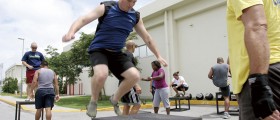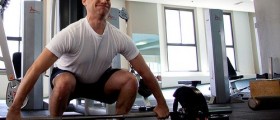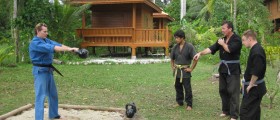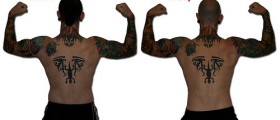
Plyometric exercises are designed to stimulate fast and powerful movements and aimed to improve functions of the nervous system. Typically, plyometric exercises are recommended to improve performance in various sports and to help the athletes achieve elasticity of the muscles, strength, and increase in the speed of muscular contractions. The resulting effect is explosiveness and enhanced results of physical efforts. For example, this workout will help athletes to hit harder, to run faster, to jump harder, or improve in any other aspect of their performance, depending on the final training goal. It is also great for anyone who is tired of the standard fitness routine or who is trying to add something new into the training and boost performance abilities.
How it works?
Plyometric workout involves series of movements that toughen tissues and literally train the nerve cells to simulate the learned pattern of muscle contractions. As a result, the muscle will become capable to generate strong contraction in the short amount of time. During the training, the exerciser will repeat rapid muscle lengthening movement, a short resting phase and then the explosive muscle shortening movement. The core of the training is stimulation of the myotatic reflex. This is also known as the stretch reflex, and it is described as a muscle contraction in response to stretch within the muscle. The training focuses on muscular power, which combines factors of speed and strength, with the final purpose to emphasize fast and powerful response. For certain athletic disciplines this is the crucial factor. For example, in jumping, the height is actually determined by the speed at which the athlete is moving once the legs have lifted from the ground. Therefore, to be a good jumper, one does not need to have strong legs but rather to be able to produce strength at high speeds.
Training Considerations
Plyometric workout is generally safe practice, but it involves a certain level of risk of injury since the large forces are generated during the exercise. Fitness professionals recommend plyometric exercises only to well-conditioned people and only under supervision. For certain individuals willing to engage in plyometric training, age can also be important. This type of workout is not suitable for pre-pubescent and the elderly, because of the hormonal changes. Moreover, it is required that a person has an appropriate level of strength, flexibility and proper sense of locomotion. Still, it is necessary that the exerciser becomes acquainted with the principles of plyometric workout tin theory, before beginning any of the exercises.







_f_280x120.jpg)





_f_280x120.jpg)



Your thoughts on this
Loading...